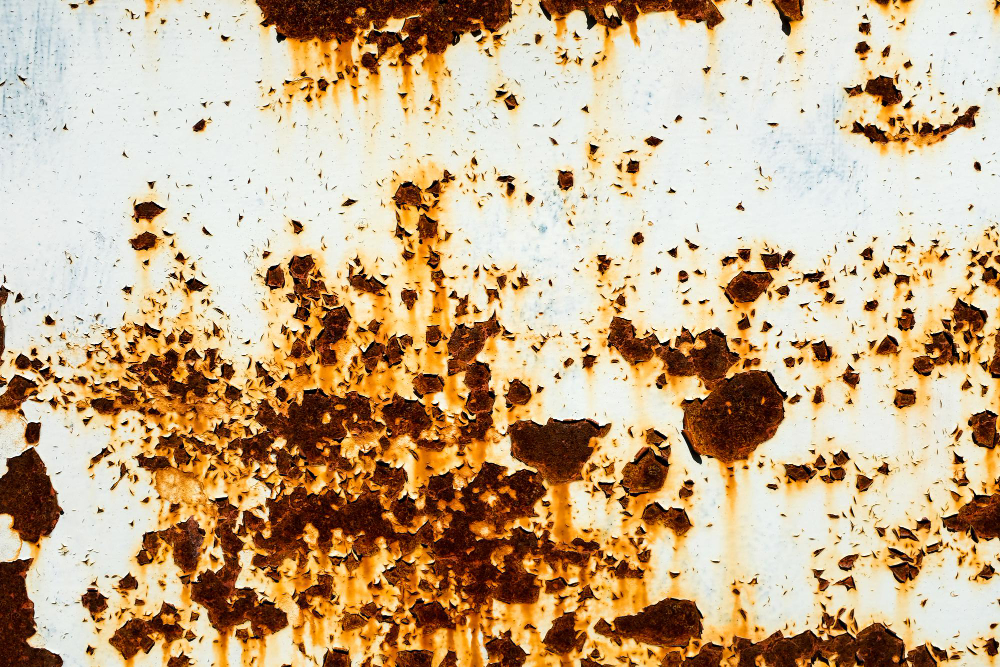What is Pitting Corrosion?
Pitting corrosion is a type of localized corrosion that affects various metals, causing small, deep pits to form on their surfaces. This type of corrosion is insidious, as it progresses at a much faster rate than general corrosion, often leading to severe damage and even component failure.
The mechanism of pitting corrosion can be split into two stages: initiation and growth. The initiation stage occurs when the protective oxide layer on the metal surface is compromised, allowing corrosive agents—such as chloride ions—to infiltrate and attack the metal. During this stage, small pits are formed on the metal surface, as the corrosion propagates deeper into the material.
In the growth stage, the pits continue to deepen and expand, ultimately compromising the structural integrity of the affected component. One major factor influencing pit growth is the pitting potential, which is defined as the potential difference between the active corrosion rate and the passive corrosion rate within a pit. Higher pitting potentials result in faster growth and larger pits. A study on the stochastic theory of pitting corrosion highlights the importance of understanding the relationship between pitting potential and other variables, such as ion concentration and applied current.
To combat pitting corrosion, engineers and scientists employ various strategies. These approaches include selecting materials with inherent resistance to pitting, designing components in a way that minimizes the likelihood of initiation, and applying protective coatings or treatments to enhance the stability of the passive film on the metal surface. Regular inspection and maintenance are also crucial to identify and address early stages of pitting corrosion before significant damage occurs.
What are the main causes of pitting corrosion?
Pitting corrosion occurs when a small area on a metal surface experiences localized damage, typically caused by aggressive chemical species like chloride ions. In many cases, pitting corrosion is initiated by breakdowns in the passive film covering the metal surface. These breakdowns can happen frequently and rapidly, leading to pit formation as mentioned in this article.
How can pitting corrosion be prevented?
To prevent pitting corrosion, reduce or eliminate the presence of aggressive chemical species by properly selecting materials or applying coatings or inhibitors. Proper material selection ensures compatibility with the environment, while coatings and inhibitors provide an additional barrier to protect the metal surface. Regular inspection and maintenance of the equipment can further help in identifying and addressing pitting corrosion before it becomes severe.
What metals are most susceptible to pitting corrosion?
Metals such as stainless steel, aluminum, and copper are susceptible to pitting corrosion in certain environments. The susceptibility of a specific metal depends on its chemical composition, the environmental conditions it is exposed to, and the presence of aggressive chemical species, such as chloride ions.
How is pitting corrosion different from general corrosion?
Pitting corrosion is a localized form of corrosion that leads to the formation of small pits on the metal surface, whereas general corrosion is a uniform loss of material across the entire surface. Pitting corrosion is often more dangerous than general corrosion because it can penetrate the metal surface deeply and rapidly, leading to equipment failure with relatively low overall material loss.
What are the most common industries affected by pitting corrosion?
Industries that regularly deal with high concentrations of aggressive chemical species, such as saltwater or acidic environments, are at a higher risk of encountering pitting corrosion. These industries include oil and gas, maritime, chemical processing, desalination, and power generation facilities.
How can corrosion be detected and monitored?
Detecting and monitoring pitting corrosion can be achieved through various non-destructive testing techniques such as ultrasonic testing, eddy current testing, and visual inspection. Regular inspections and maintenance routines can help identify early signs of pitting corrosion and address the issue before it leads to severe equipment damage or failure. Implementing a corrosion monitoring system can also help track the performance of corrosion prevention strategies and make necessary adjustments as needed.
